
Entrepreneurship Projects: Ideas, Types, and Getting Started
Oct 08, 2025 5 Min Read 7816 Views
(Last Updated)
Have you ever had an idea and wondered, “Could this become something real?” Whether it’s a clever app concept, a handmade product, or a service your community needs, entrepreneurship projects are your opportunity to turn ideas into action.
These entrepreneurship projects aren’t just for seasoned business people; they’re for anyone willing to take their first step. In this article, you’ll explore different types of entrepreneurship projects, see real-world examples, and even take on a short brainstorming challenge to help you start building your own.
Let’s dive into the world of entrepreneurship projects and discover how you can create something meaningful from scratch.
Table of contents
- What is the Need for Entrepreneurship Projects?
- Types of Entrepreneurship Projects
- Tech & Digital Projects
- Product-Based Projects
- Service-Based Projects
- Social Venture Projects
- Brainstorming Challenge: Create Your Entrepreneurship Idea
- How to Start Your Small Entrepreneurship Project?
- Conclusion
- FAQs
- How do I know if my business idea is good?
- Do I need a business plan to start a small project?
- How much money do I need to start?
- Should I find a partner before launching?
- When should I start my entrepreneurship project?
What is the Need for Entrepreneurship Projects?
Entrepreneurship projects are creative ventures where individuals or teams launch new products, services, or social initiatives to solve problems or meet market needs. These projects range from tech apps and websites to handcrafted products, neighborhood services, or social enterprises.
At their core, they involve innovation and risk-taking to turn ideas into tangible outcomes. Entrepreneurs are often described as those who “pursue opportunity beyond resources controlled,” always seeking new solutions and markets.
In practical terms, entrepreneurship projects matter because they turn creative ideas into real-world impact. For example, even a simple local project like a community garden or tutoring service can teach project planning and teamwork. On a larger scale, many of today’s leading tech companies and social programs began as small side projects or experiments.
Types of Entrepreneurship Projects
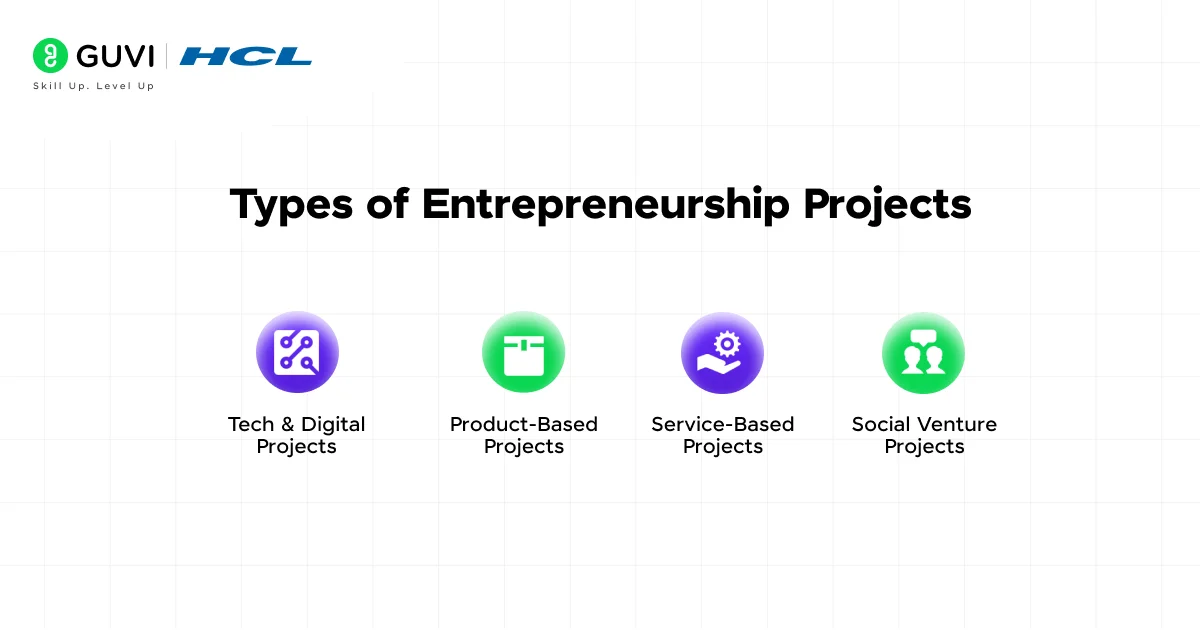
Entrepreneurship projects can be broadly grouped by the kind of product or impact they aim for. Four common types are tech/digital projects, product-based projects, service-based projects, and social ventures.
1. Tech & Digital Projects

Tech and digital projects are those that involve software, apps, or online platforms. These ventures typically aim to solve problems with technology or create new online services. Classic examples include mobile apps, web platforms, software tools, or tech-enabled services.
A great illustration is Slack, the popular team chat software. Slack started as an internal messaging tool built by a small team working on a different project. When the game they were developing failed to launch, the team realized their chat tool was far more valuable. In just over a year after its public launch, Slack became the fastest startup ever to reach a $1 billion valuation.
Similarly, Twitter began as an internal hackathon project at the podcast company Odeo. Employees built a simple text-message service during a company coding day, and it unexpectedly took off, eventually transforming global communication. These cases show that even a small technical side project can become a huge success once it meets a real need.
In every case, the tech project started by solving a specific problem (team communication, social networking) and scaled up as the user base grew. These examples highlight how tech-based entrepreneurship projects often begin with a simple idea or prototype, get early feedback, and evolve with demand.
2. Product-Based Projects
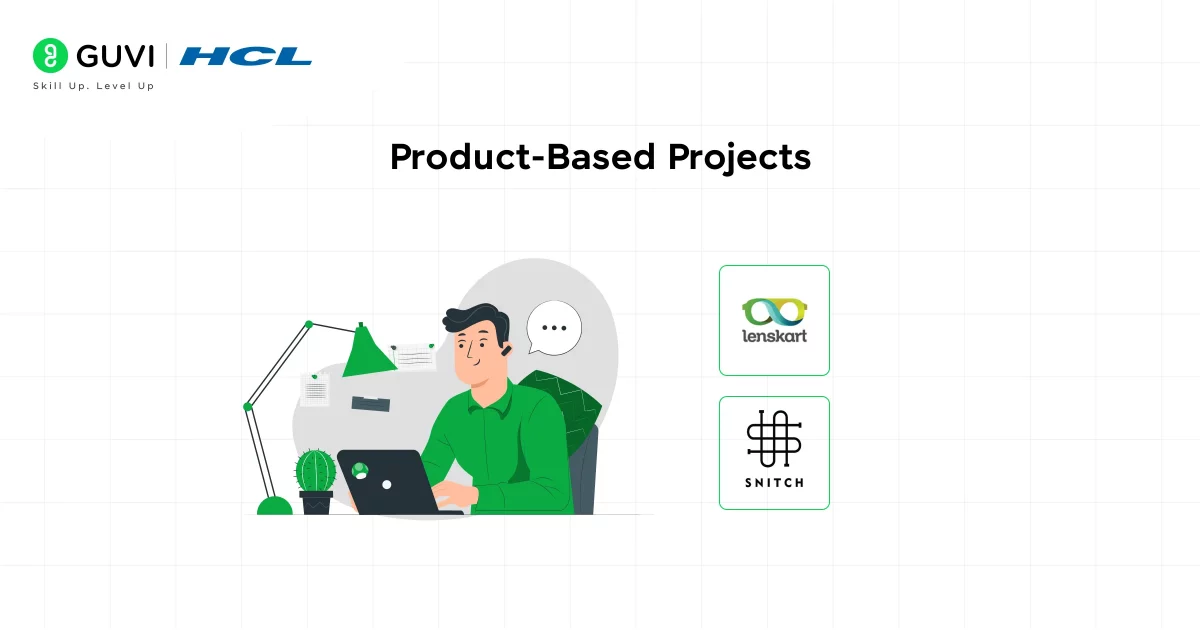
Product-based projects involve creating and selling tangible goods. This might be anything from handcrafted jewelry or custom bicycles to hardware devices or consumer packaged goods. The key is developing a physical product that customers will buy.
For example, the eyewear brand Warby Parker is a modern product-based venture: the founders designed stylish eyeglass frames to sell directly online. For every pair of glasses sold, Warby Parker donates a pair to someone in need. This “buy one, give one” model has made them famous not only as a fashion brand but also as a social entrepreneur.
On a smaller scale, students or hobbyists often start product ventures like a handmade soap line or a 3D-printed gadget business. The process usually involves ideation, prototyping the product, and then testing sales. Even if a product project stays small, the experience of designing and selling something teaches valuable skills.
Also Read: What is the Scope of Entrepreneurship in 2025?
3. Service-Based Projects

Service-based projects deliver value through skills or labor rather than goods. These projects can be digital (like web design or online tutoring) or in-person (like landscaping, food catering, or consulting).
Service ventures often have low startup costs: you may only need your time, knowledge, and perhaps a few tools or certifications. For example, many young entrepreneurs start by freelancing or offering local services.
One student might launch a tutoring service for younger kids in math; another could start a pet-sitting or car-detailing business in their neighborhood. On the tech side, a common service startup is a small digital agency that builds websites or apps for local companies.
4. Social Venture Projects
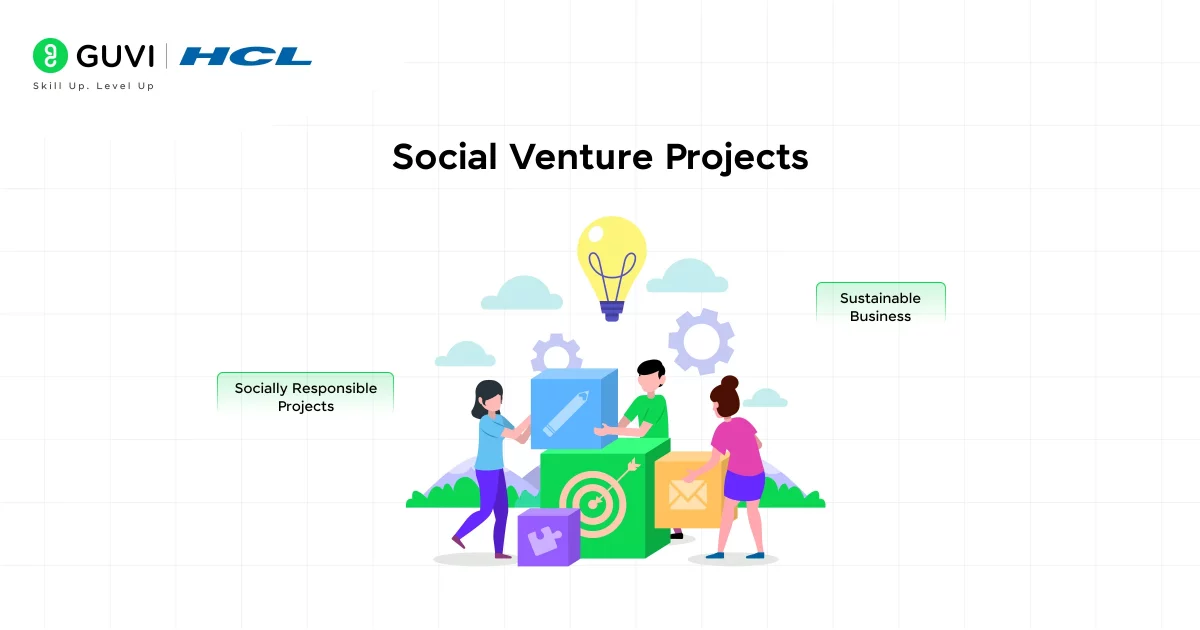
Social ventures (or social entrepreneurship projects) aim to solve social or environmental problems while running a sustainable business. The idea is to blend a profit motive with a mission to do good.
Social ventures can take many forms – from nonprofit-like giving programs to structured social businesses. The key point is that a social project builds a positive impact into its core mission. For aspiring entrepreneurs interested in social good, look for real problems you care about (like clean water access, education, or public health) and think of sustainable ways to address them.
Explore: Top 9 Types of Entrepreneurship
Brainstorming Challenge: Create Your Entrepreneurship Idea
At this point, you’ve seen many examples of entrepreneurship projects. Now it’s your turn to come up with ideas! Grab a pen and some paper. Start brainstorming by answering these prompts to generate potential project ideas:
List daily problems or annoyances: What frustrates you or your peers each day? Is there a way to fix it? (For example, students might note “finding affordable textbooks,” pet owners might note “busy schedules” requiring dog walking, etc.)
- Identify your passions and skills: What do you enjoy or excel at? It could be coding, cooking, art, teaching, or any hobby. For instance, if you love baking, maybe you could create a new snack business. If you’re good with tech, perhaps an app could solve a problem you’ve seen.
- Combine and shape ideas: Mix your problem list with your skills. Is there a “pain point” in a field you care about? Can technology or creativity address it? Write down every idea, even if it seems wild. No judgment at this stage—wild ideas can spark practical ones.
Think of this as a free-flow exercise. Use mind maps, doodles, or sticky notes to capture ideas visually. Later, you can sift through these ideas for promising ones. But right now, the more ideas the better!
Discover: Mastering the Fundamentals of Entrepreneurship
How to Start Your Small Entrepreneurship Project?
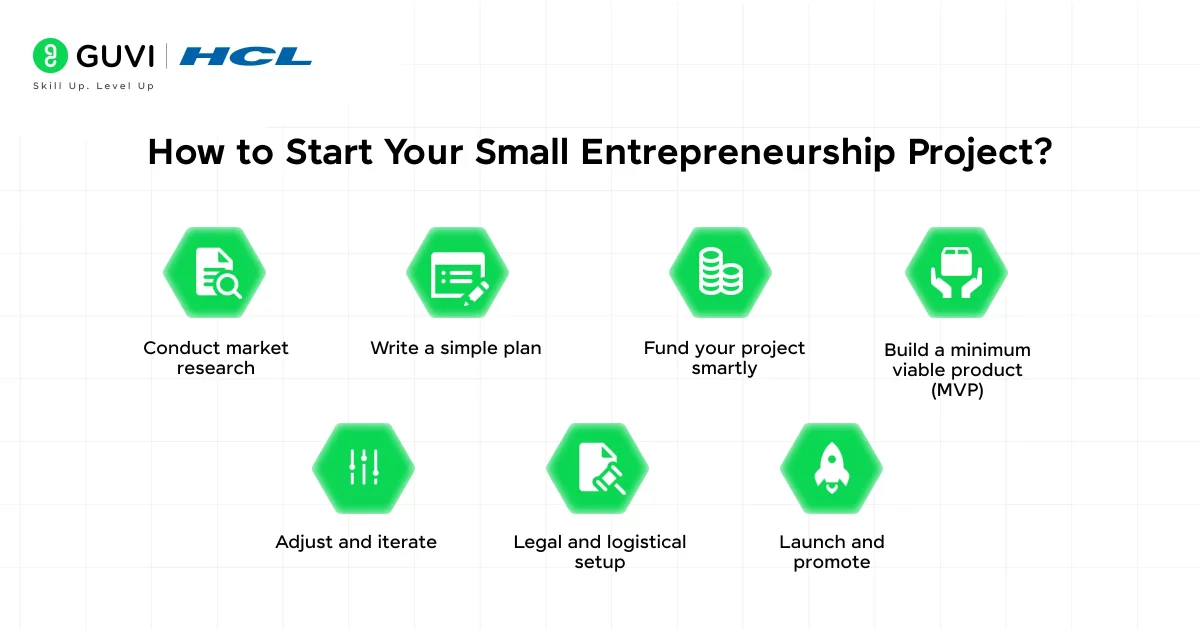
Once you have an idea that excites you, turning it into a small project involves a few key steps. Here’s a simple roadmap to guide you:
- Conduct market research. First, verify that your idea has a potential audience. Talk to people who might use or buy your product/service. What do they like or not like about existing options? This might mean searching online, surveying friends and community members, or visiting similar businesses.
- Write a simple plan. You don’t need a 50-page business plan, but sketch out the basics: What exactly will you offer? Who are your customers? How will you deliver it? What will you charge, and what will it cost to make? Writing it down helps organize your thoughts and will be essential if you need help.
- Fund your project smartly. Most small projects start with little or no outside funding. Estimate the minimal money and time needed to launch a basic version of your idea. Can you bootstrap it? (Use personal savings, or ask family.) The idea is to spend only what’s needed to test your concept.
- Build a minimum viable product (MVP). Create the simplest version of your product or service you can. This could be a flyer and a scheduled time for a home tutoring session, or a basic website for an app concept. The goal is to test your idea on a small scale and iterate.
- Adjust and iterate. Based on what you learn, refine your offering. Maybe customers suggest improvements, or you discover new needs. Don’t be afraid to change direction; many successful startups pivoted when they got new insights.
- Legal and logistical setup. When you’re ready to grow beyond testing, take care of the basics. Choose a simple business structure and register any necessary business name or license.
- Launch and promote. Finally, let people know about your project! Use social media, flyers, word-of-mouth, or a launch event. The way you market it depends on your project and audience. Remember to talk about the real benefit: what problem you solve or what delight you offer. Early sales or sign-ups will motivate you and provide more feedback for improvement.
Suggested Read: Best Way to Start Entrepreneurship as a Career After College
Throughout these steps, don’t overlook the power of networking and support. Talk to teachers, mentors, or local entrepreneurs about your idea. They might give advice or even resources. Finally, embrace the “side project” mindset: work on your idea in your spare time so there’s less pressure, learn as you go, and enjoy the process.
If you want to learn more about Entrepreneurship, along with a set of Full-stack skills, then consider enrolling in HCL GUVI’s IIT-D certified Entrepreneurship Course, which starts from basic concepts like OOPS and ends with building a product and deploying it. The course also helps you with the means to get an investor for funding and a globally recognized certification by the end.
Conclusion
In conclusion, launching entrepreneurship projects is a journey of learning and creativity. You’ve seen that projects can be tech platforms, physical products, helpful services, or mission-driven ventures. No matter the type, the key ingredients are problem-solving, planning, and persistence.
Remember that almost all entrepreneurs start small. Every major startup or social enterprise began with someone’s modest idea and took shape through trial and error.
Now, take a deep breath and start that first small project. Who knows? A simple class project or weekend experiment could spark the next big venture. Keep learning, stay creative, and reach out when you need help.
FAQs
1. How do I know if my business idea is good?
Research your target audience: talk to potential users, look at similar solutions, and find a real need your idea meets. If it solves a problem and resonates with people, you’re on the right track. Remember, innovation often improves on existing ideas rather than completely reinventing the wheel.
2. Do I need a business plan to start a small project?
A full-scale business plan isn’t necessary at first—just a simple roadmap outlining what you’ll offer, who your audience is, and how you’ll deliver it. Even a one-page outline helps clarify your concept and guide your next steps.
3. How much money do I need to start?
The amount depends on your project type: digital services may require minimal funds, while product-based ideas need materials or tools. Start lean—estimate your basic costs, bootstrap if possible, and consider grants or small crowdfunding.
4. Should I find a partner before launching?
A partner can bring valuable skills or resources you lack, but only join if they add clear value. Many partnerships fail due to imbalance, so consider going solo until you truly need complementary expertise.
5. When should I start my entrepreneurship project?
Begin once you’ve outlined optimistic, neutral, and pessimistic scenarios—set realistic goals, budget estimates, and timelines. If your plan is solid and you’ve secured basic support, it’s time to begin, even with limited resources.
























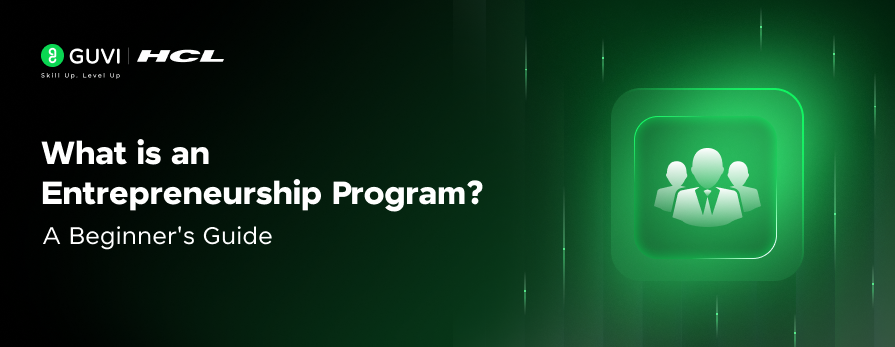

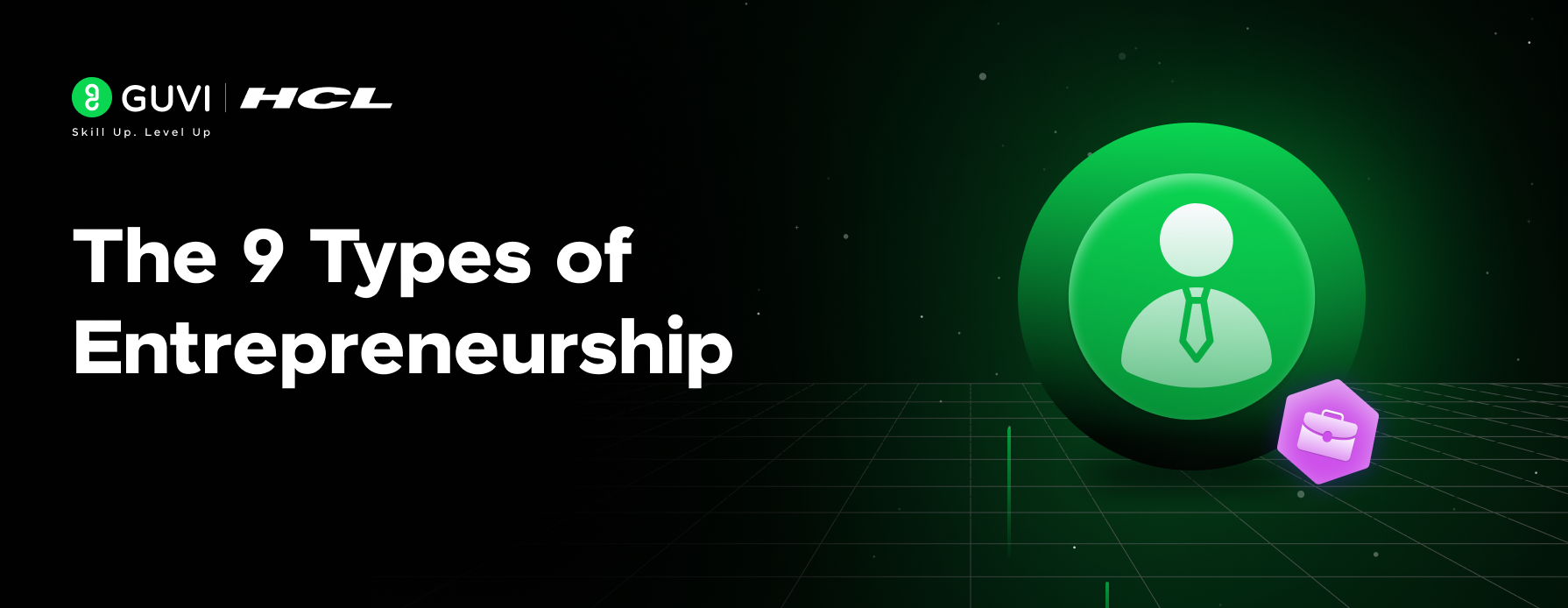
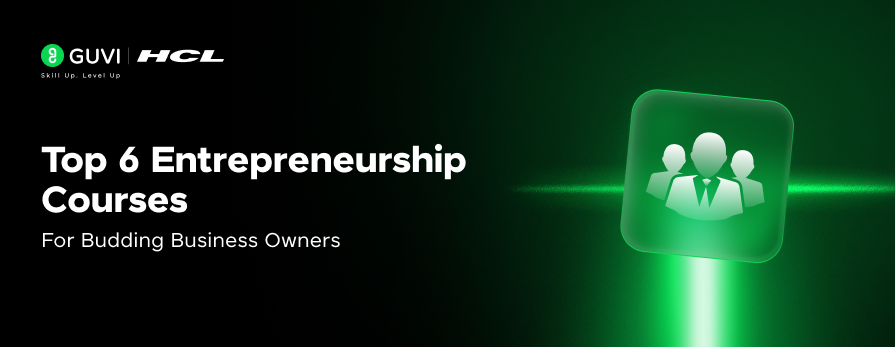
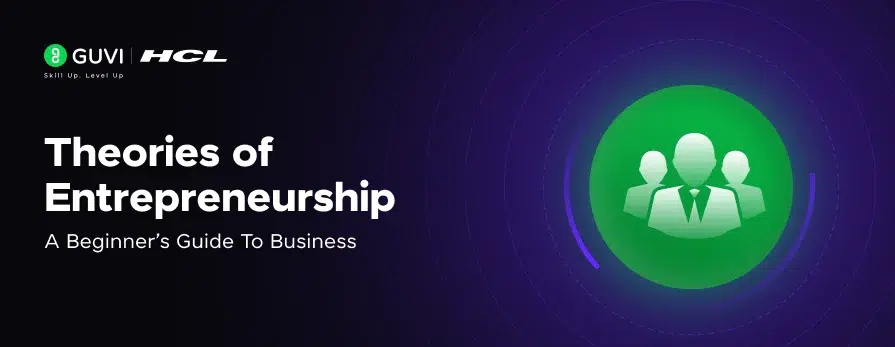
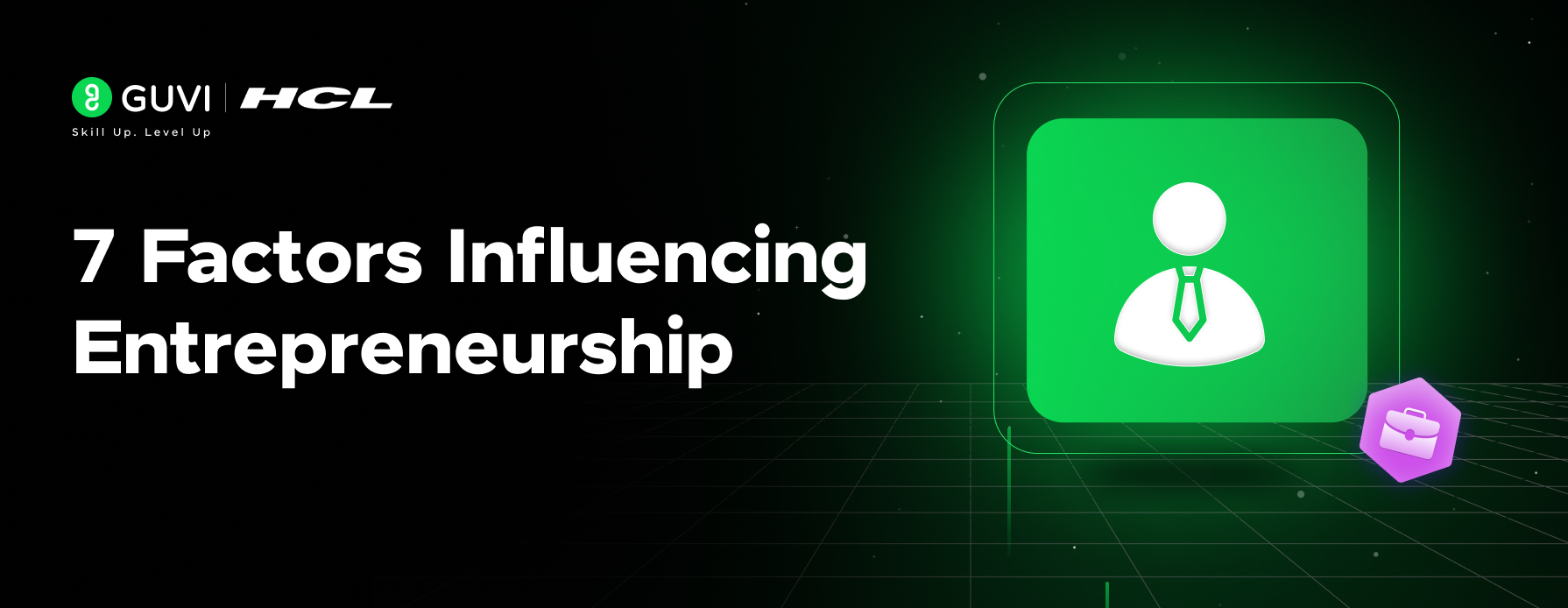






Did you enjoy this article?